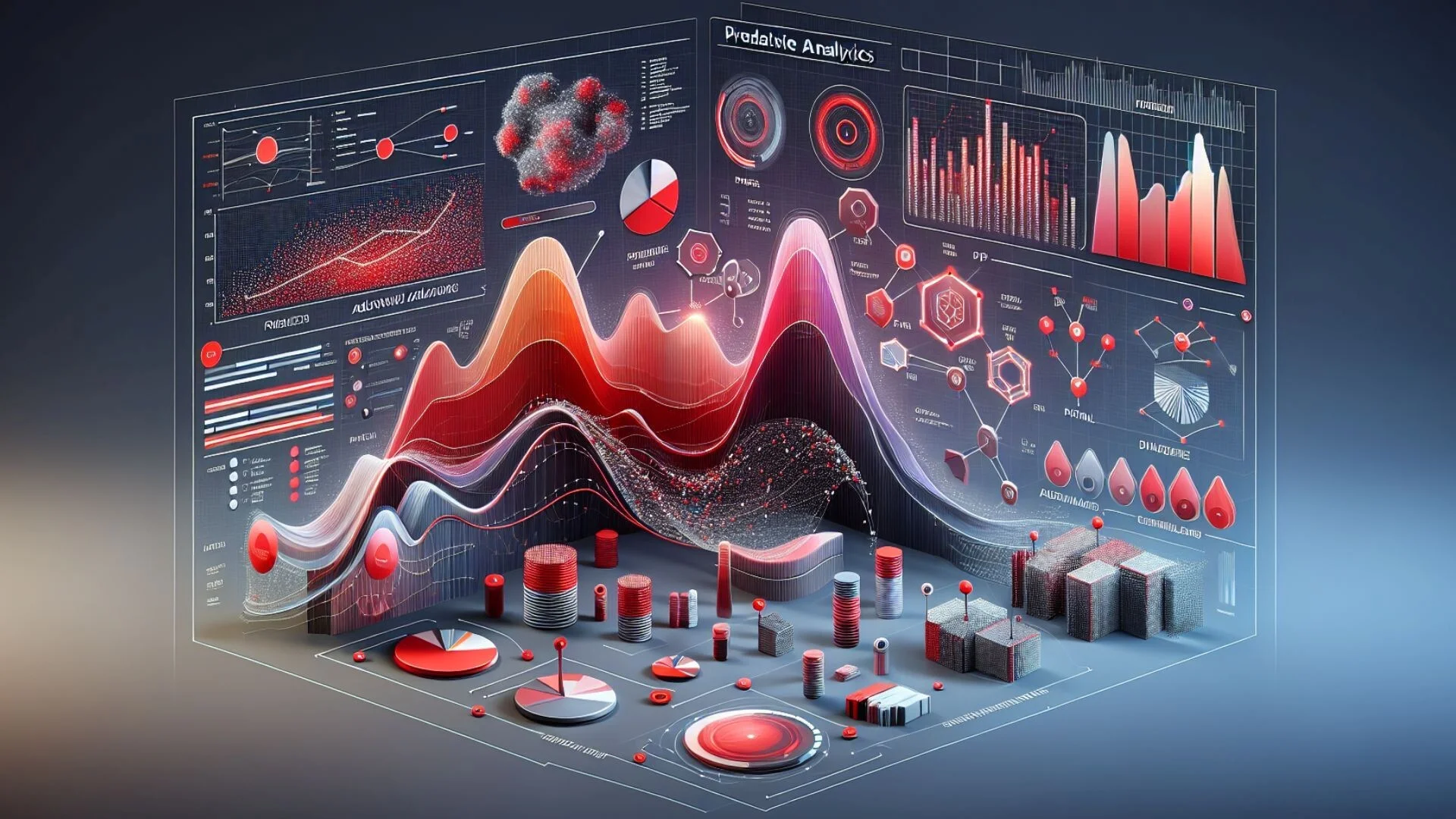Databricks for Predictive Analytics: Staying Ahead in a Competitive Market
Author: Laila Meraj
21 Feb, 2025
Predictive analytics has emerged as a powerful tool to anticipate market trends, customer behavior, and operational inefficiencies. However, the sheer volume and complexity of data can be overwhelming. Databricks has emerged as a unified data analytics platform that empowers organizations to harness the full potential of their data for predictive analytics. In this blog, we’ll explore how leveraging Databricks can help businesses stay ahead in a competitive market.

How to Leverage Databricks for Predictive Analytics?
1. Data Preparation and Cleaning
The foundation of any predictive analytics project is clean, high-quality data. Databricks simplifies data preparation with its intuitive interface and powerful ETL (Extract, Transform, Load) capabilities. Teams can use SQL, Python, or Scala to clean, transform, and enrich data, ensuring it’s ready for analysis.
2. Feature Engineering
Feature engineering is a critical step in building predictive models. Databricks’ Feature Store, which is an application of Databricks AutoML, allows teams to create, share, and reuse features across multiple models, reducing redundancy and improving consistency. For example, an e-commerce company can create features like “average purchase value” or “customer lifetime value” and use them across various predictive models.
3. Model Development and Training
Databricks provides a collaborative environment for data scientists to develop and train machine learning models. With support for popular frameworks like TensorFlow, PyTorch, and XGBoost, teams can experiment with different algorithms and techniques. The platform also offers AutoML capabilities, which automate the process of model selection and hyperparameter tuning.
4. Model Deployment and Monitoring
Once a model is trained, Databricks makes it easy to deploy it into production. The platform integrates with MLflow, enabling teams to track experiments, manage model versions, and monitor performance in real time. This ensures that models remain accurate and reliable over time.
5. Real-Time Predictions
For businesses that require real-time insights, Databricks supports streaming analytics. By integrating with platforms like Apache Kafka, organizations can process and analyze data in real time, enabling instant predictions. For example, a logistics company can predict delivery delays and take proactive measures to mitigate them.
6. Collaboration and Visualization
Databricks fosters collaboration by allowing teams to share notebooks, dashboards, and insights. Business analysts can use Databricks’ visualization tool, Databricks Notebook, to create interactive dashboards, making it easier to communicate findings and drive decision-making.
Why Use Databricks for Predictive Analytics?
Predictive analytics requires processing vast amounts of structured and unstructured data, building complex models, and deploying them at scale. Databricks simplifies these tasks with its powerful features and integrations. Here’s why it’s an ideal choice for predictive analytics:
1. Seamless Data Integration
Databricks integrates seamlessly with various data sources, including cloud storage (e.g., AWS S3, Azure Blob Storage), data warehouses (e.g., Snowflake, Redshift), and streaming platforms. This ensures that all relevant data is accessible for analysis, enabling more accurate predictions.
2. High-Performance Data Processing
With its Apache Spark foundation, Databricks delivers lightning-fast data processing capabilities. It can handle large-scale data transformations, feature engineering, and model training efficiently, reducing time-to-insight.
3. Advanced Machine Learning Tools
Databricks provides a comprehensive suite of tools for machine learning, including MLflow for model tracking, AutoML for automated model selection, and Feature Store for managing reusable features. These tools accelerate the development and deployment of predictive models.
4. Real-Time Analytics
In today’s dynamic market, real-time insights are crucial. Databricks supports real-time data streaming and analytics, allowing businesses to make predictions based on the latest data.
5. Cost Efficiency
By leveraging cloud infrastructure and optimizing resource allocation, Databricks helps organizations reduce costs while maintaining high performance.
Real-World Use Cases of Databricks for Predictive Analytics
Let’s look at some real-world examples of how businesses are leveraging Databricks for predictive analytics:
1. Healthcare: Predictive Diagnostics
Healthcare providers often leverage Databricks to analyze patient data and predict the likelihood of diseases. This enables early intervention, improves patient outcomes, and reduces healthcare costs. Explore our work and learn how Xorbix Technologies is playing its role in the healthcare sector for better outcomes.
2. Manufacturing: Predictive Maintenance
Manufacturing firms use Databricks to monitor equipment sensors and predict potential failures. By identifying issues before they occur, the company can schedule maintenance proactively, minimizing downtime and reducing costs.
3. Finance: Fraud Detection
A financial institution employs Databricks to analyze transaction data and detect fraudulent activities in real time. Predictive models help identify suspicious patterns, enabling the institution to take immediate action and prevent losses.
4. Transportation: Route Optimization
Logistic companies use Databricks to analyze traffic data and predict optimal delivery routes. This reduces fuel consumption, improves delivery times, and enhances customer satisfaction.
5. Retail: Personalized Marketing
A retail company uses Databricks to analyze customer data and predict purchasing behavior. By building predictive models, the company can recommend personalized products, optimize marketing campaigns, and increase customer retention.
Best Practices: Leveraging Databricks for Predictive Analytics
To maximize the benefits of Databricks for predictive analytics, consider the following best practices:
- Start with a Clear Objective: Define the business problem you want to solve and the key metrics you’ll use to measure success.
- Invest in Data Quality: Ensure your data is clean, accurate, and well-structured before building predictive models.
- Leverage Automation: Use Databricks’ AutoML and MLflow capabilities to automate repetitive tasks and accelerate model development.
- Foster Collaboration: Encourage cross-functional collaboration between data engineers, data scientists, and business analysts to drive innovation.
- Monitor and Iterate: Continuously monitor model performance and iterate based on new data and insights.
Conclusion
By leveraging Databricks, businesses can unlock the full potential of their data, build accurate predictive models, and make data-driven decisions with confidence. From seamless data integration to advanced machine learning tools, Databricks provides everything organizations need to stay ahead of the curve.
Databricks can help you transform your data into actionable insights no matter what industry you are in. Further, partnering with experts like Xorbix Technologies can accelerate your journey toward data-driven success. We offer a comprehensive suite of services designed to meet your unique needs.
Read more on our related services:




